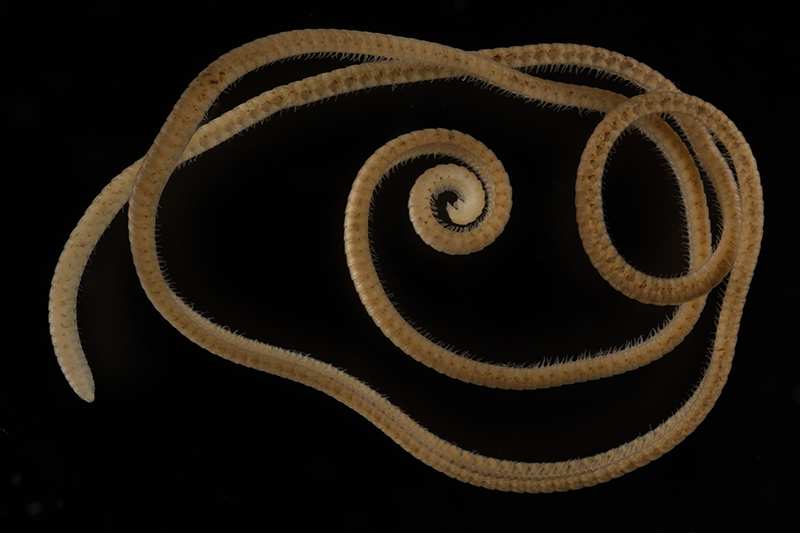Although the name millipede comes from Latin for “thousand feet”, before now no species has been found with more than 750 legs. After the discovery of a new millipede with 1,306 legs however, this arthropod is finally living up to its name.
The new species is Eumillipes persephone – emillipes translating as “true-thousand-foot”, with Persephone being the Greek goddess of the underworld. The wriggly creature was found 60 meters (197 feet) underground in a mining drill hole in the Eastern Goldfields Province of Australia.
Based on the four creatures analyzed so far, E. persephone has up to 330 segments on its body, and can measure up to 0.95 millimeters (0.04 inches) wide and 95.7 mm (3.77 inches) long. This millipede has a cone-shaped head with antennae and a beak, but no eyes.
 A female E. persephone with 1,306 legs. (Marek et al., Scientific Reports, 2021)
A female E. persephone with 1,306 legs. (Marek et al., Scientific Reports, 2021)
“Among the earliest animals to breathe atmospheric oxygen, and with some extinct species that grew to two meters in length, millipedes have lived on this planet for more than 400 million years,” write the researchers in their paper describing the find.
“Here we report the discovery of E. persephone, the first super-elongated millipede known from Australia, and the new world record holder of the animal with the greatest number of legs.”
The research team thinks this new millipede is distantly related to the species Illacme plenipes, which had set the previous record of 750 legs. This particular millipede is found in the central region of California, and despite its absurd legginess, tends to grow to a length of just 25 to 40 millimeters.
Besides having so many legs and no eyes, E. persephone is also notable for its long, thread-like appearance (similar to I. plenipes) and its uniformly pale and cream-colored exoskeleton. These characteristics help mark it out as a species distinct from others.
The long bodies, multiple segments and many legs found in both I. plenipes and E. persephone could well have evolved to enable these millipedes to push and burrow through the soil more effectively, the researchers suggest.
“This telescoping locomotion, by sliding trunk segments coupled with the thrust of the legs, propels the animal through a varied and unpredictable underground microhabitat, and the increase in leg number likely contributes more pushing power to force through small crevices and openings,” write the researchers.
There are still plenty of unknowns about E. persephone – what it eats, for example, and where else it might be found – but there’s already enough to go on to mark it out as its own species and establish that it is a record breaker in terms of its leg count.
The researchers say the discovery of this new millipede is more evidence of the biodiversity found deep underground in the Eastern Goldfields Province, and helps to make a strong case for the region to be protected for the future.
While conditions above ground changed significantly across thousands of years, according to the researchers, the underground habitat most probably stayed stable – cool and moist. It’s possible that many more discoveries are waiting to be made.
“These underground habitats, and their inhabitants, are critically understudied, despite their ecological importance in filtration of groundwater and screening of environmental toxins,” write the researchers.
The research has been published in Scientific Reports.
